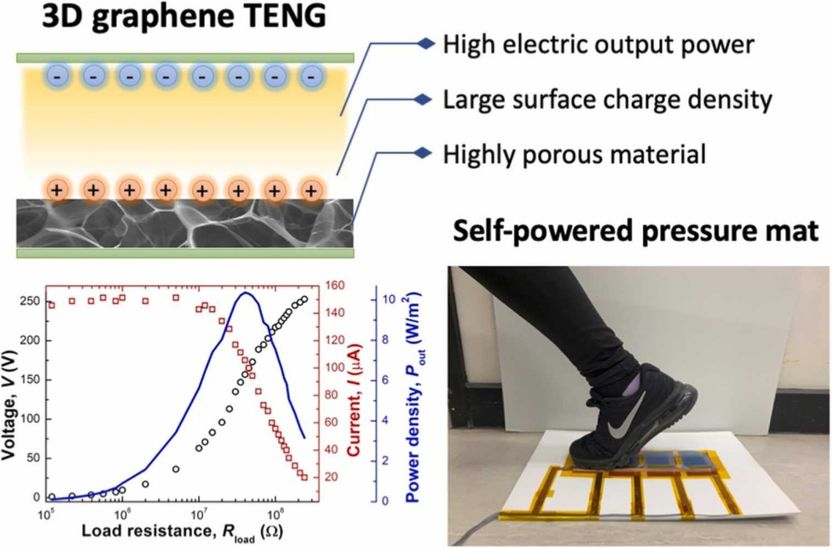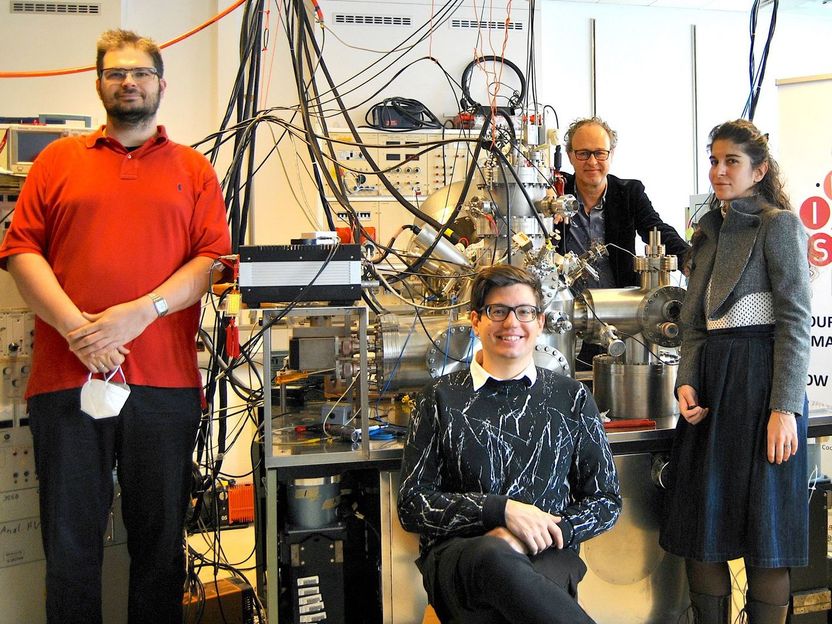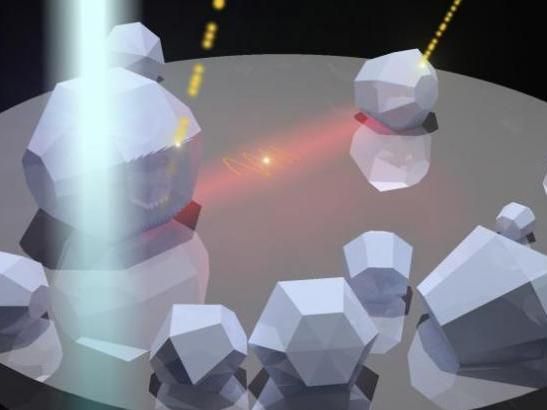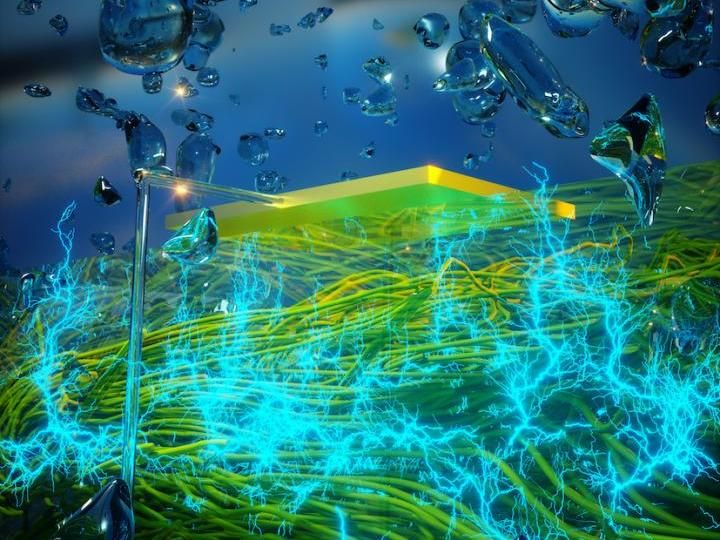Humans to provide energy source for smart devices of the future
New study shows that graphene-based TENGs could finally unlock nature’s wasted energy
Scientists may have finally found a solution to effectively harvesting energy from humans into electrical energy. Researchers from the Institute of Thin Films, Sensors and Imaging (ITFSI) from the University of the West of Scotland (UWS) explored the use of the 3D graphene foam material Gii™ by Integrated Graphene as an active layer in an energy generator (known as a TENG).

UWS self-powered pressure mat
The investigation aimed to transform mechanical energy wasted in nature into electrical energy that could be used to power small electronic devices and sensors in the booming global market for Internet of Things (IoT) technologies.
The research shows that the force of a human footprint on a pressure-sensitive mat, equipped with Gii-TENG sensors, can produce enough energy to anonymously identify people entering or leaving a room. As well as providing a low-cost and energy-efficient solution to monitoring building occupancy, the mats could also help to optimize energy resources by, for example, controlling room temperature upon entrance or exit.
The findings of this study will be of particular interest to schools and universities who could employ the technology to link the measurement of room occupancy to a ventilating system and a CO2 monitor, reducing the volume of CO2 which has been shown to reduce the ability to focus.
Mechanical energy is one of the most abundant and versatile energy sources available in nature. For around 20 years, triboelectric nanogenerators (TENGs) have been investigated as a technique for converting mechanical energy from our daily actions into usable electrical energy which can power both small IoT electronic devices and sensors but also more power-hungry items such as electric cars and drones.
However, efforts to develop a commercially viable TENG have, to date, been hampered by issues relating to low durability, limited energy output and inefficiency. The addition of Gii™ to TENG has opened up a whole new world of possibilities due to its unique properties including high surface area, porosity, light weight, and superior electrical properties. The energy autonomous, pressure sensing nature of Gii-TENG has the potential to transform various aspects of our lifestyles, society and economy including, for example:
- Harvesting energy from sports such as golf, running, and tennis to power smart devices which generate performance data
- Self-powered wearable biosensors for early diagnosis of health conditions including cardiovascular disease, gout and diabetes.
- Harvesting energy from cars on roads and people walking in the creation of smart cities
- A smart energy solution for industry 4.0
- Extending the hovering time of drones, allowing transportation of parcels - and even people in the future - for longer distances and longer times
Marco Caffio, CSO, Integrated Graphene said: “The possibilities of Gii-TENG are endless, with the potential to push the limits of technology beyond human expectations. With the number of IoT devices interlinked worldwide forecast to reach 100 billion by 2030, there is a clear need for new sustainable energy sources and technologies which can meet the power demand from our reliance on technology for work, life and play. Our Gii-TENG platform could potentially prevent the constant replacement of batteries in trillions of devices, and reduce the utilisation of wires, making the IoT technology of the near future to be wireless and energy autonomous. We’re excited by its potential and believe it could play a key role in society’s journey towards a smart world.”
Organizations
Other news from the department science

Get the chemical industry in your inbox
By submitting this form you agree that LUMITOS AG will send you the newsletter(s) selected above by email. Your data will not be passed on to third parties. Your data will be stored and processed in accordance with our data protection regulations. LUMITOS may contact you by email for the purpose of advertising or market and opinion surveys. You can revoke your consent at any time without giving reasons to LUMITOS AG, Ernst-Augustin-Str. 2, 12489 Berlin, Germany or by e-mail at revoke@lumitos.com with effect for the future. In addition, each email contains a link to unsubscribe from the corresponding newsletter.
Most read news
More news from our other portals
Last viewed contents
Hyundai_Enercell
A micro-supercapacitor with unmatched energy storage performance

On the edge of friction - Precise insight into how two microscopic surfaces slide over one another could help in the manufacture of low-friction surfaces
New technique 'sees' radioactive material even after it's gone
Orlov_(diamond)

Old Mystery Solved: a "New Kind of Electrons" - Why do certain materials emit electrons with a very specific energy?
Killer silk: Making silk fibers that kill anthrax and other microbes in minutes

Putting quantum scientists in the driver's seat
Altana Pharma invests in new High Throughput Screening system from Thermo Electron




























































